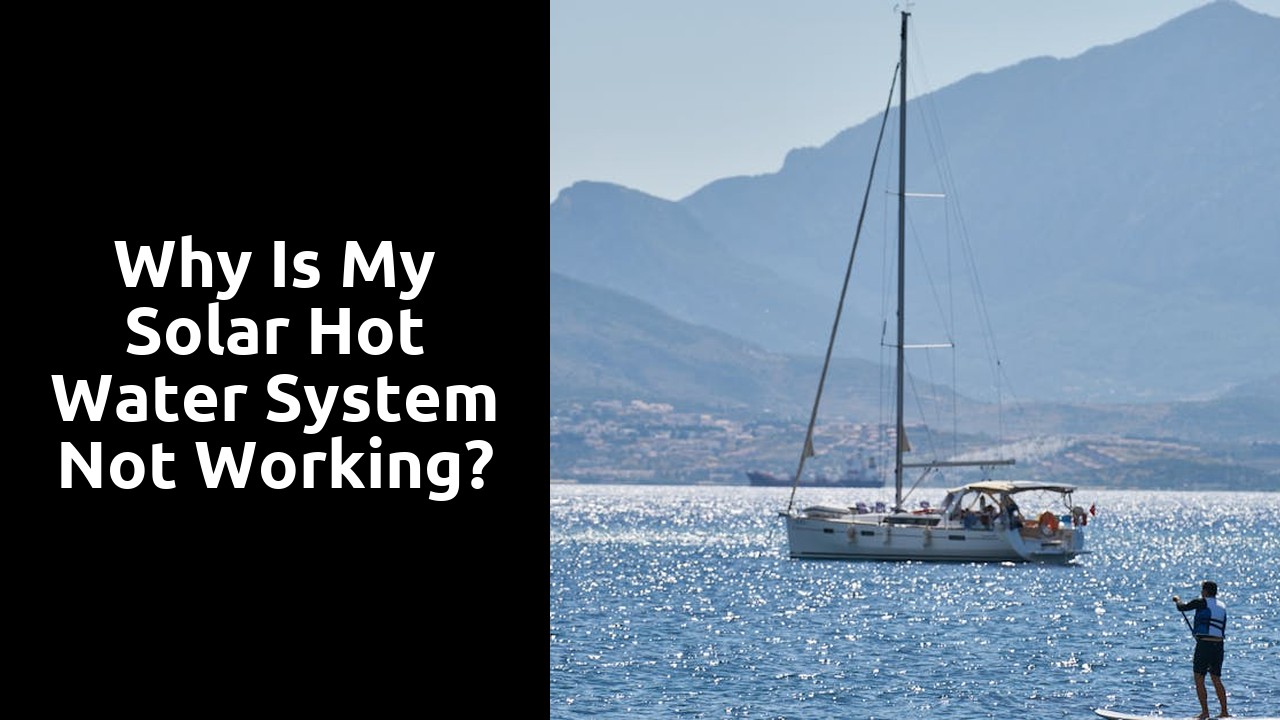
Evaluating the Control System
To evaluate the control system of a solar hot water system, start by checking the functionality of the controller. Confirm that all buttons are responsive and the display is clearly visible. Additionally, ensure that the settings are accurate according to the manufacturer's guidelines. Any discrepancies in the display or settings may indicate a potential issue with the control system. Solar Hot Water System Troubleshooting involves thorough examination in this initial stage to identify any anomalies that could affect the system's performance.
Next, assess the timer settings on the controller to guarantee that they align with the hot water usage patterns of the household. It's crucial to confirm that the timer is programmed to heat water during peak usage times for maximum efficiency. Any deviations in the program could lead to insufficient hot water availability or energy wastage. By meticulously inspecting and adjusting the controller's settings, you can ensure optimal performance of the solar hot water system. Solar Hot Water System Troubleshooting aims to address control system issues effectively to maintain the system's functionality.
Programming the Controller
Programming the controller is an essential step in ensuring optimal functionality of the solar hot water system. The controller is the brain of the system, responsible for regulating temperature settings and operating times. Accessing the controller's menu allows users to input parameters such as desired water temperatures and preferred operating hours, tailoring the system to meet specific needs.
Properly configuring the controller is crucial for efficient performance and energy savings. In the event of issues or malfunctions, referring to the user manual can provide guidance on reprogramming the controller to rectify the situation. Being familiar with the controller's functions and settings will enable users to effectively troubleshoot any issues that may arise with their Solar Hot Water System.
Examining the Backup Heating System
The backup heating system in a solar hot water system provides a reliable source of hot water during periods of low sunlight or system malfunction. It is essential to regularly examine the backup heating system to ensure its proper function and efficiency. Solar Hot Water System Troubleshooting involves inspecting the heating element for any signs of wear or damage that may affect its ability to heat the water effectively. Additionally, testing the backup heating system periodically can help in identifying any potential issues before they escalate into larger problems that may disrupt the hot water supply. Regular maintenance and monitoring of the backup heating system are crucial for the overall performance and longevity of the solar hot water system.
Testing the Heating Element
When the heating element in a solar hot water system begins to malfunction, it can lead to insufficient hot water production. To troubleshoot this issue, begin by checking the wiring connections to ensure they are secure and free of any damage. Additionally, measure the resistance of the heating element using a multimeter to determine if it is within the specified range. If the resistance reading is significantly higher or lower than the recommended value, it may indicate a faulty heating element that requires replacement. Conducting regular inspections and testing of the heating element is crucial in maintaining the efficiency and performance of the solar hot water system.
If the heating element continues to underperform even after verifying the wiring connections and resistance levels, consider inspecting the element itself for any signs of corrosion or damage. Scale buildup on the heating element can also impede its effectiveness and result in reduced heating capacity. In such cases, carefully clean the heating element using a non-abrasive brush or cloth to remove any debris or buildup. Regular maintenance and inspection of the heating element are essential steps in ensuring the optimal operation of the solar hot water system.
Assessing the Plumbing Connections
Assessing the plumbing connections is a crucial step in the process of troubleshooting a solar hot water system. Start by visually inspecting all the connections to ensure they are securely fastened and free of any visible damage. Check for any signs of leaks or corrosion around the joints and fittings, as these can indicate potential issues that need to be addressed promptly.
After the visual inspection, it is recommended to pressurise the system to check for any hidden leaks or weak points in the plumbing connections. This can be done by using a pressure testing kit to ensure that the system can maintain the required pressure without any significant drops. Addressing any leaks or weak connections promptly will help maintain the efficiency and performance of the solar hot water system and prevent further damage or loss of energy.
Checking for Leaks
Checking for leaks is a crucial step when troubleshooting a solar hot water system. Leaks can lead to significant energy loss and potential damage to the system's components. Start by inspecting all visible plumbing connections for any signs of water leakage. Check the pipes, fittings, and valves carefully to ensure there are no drips or moisture build-up. Additionally, examine the pressure relief valve and the temperature and pressure relief valve for any leaks or spills. Any water accumulation around these areas could indicate a problem that needs to be addressed promptly to prevent further issues.
Take the time to also check the connections between the solar panels and the hot water storage tank. Look for any indications of water leakage, such as damp spots or discolouration around the connections. It is important to address any leaks promptly to maintain the efficiency of the solar hot water system and prevent water wastage. Regularly inspecting and maintaining the plumbing connections of the system can help ensure its optimal performance and longevity.
FAQS
How do I evaluate the control system of a solar hot water system?
To evaluate the control system of a solar hot water system, you need to check if the controller is functioning correctly and efficiently regulating the temperature of the water.
What is involved in programming the controller of a solar hot water system?
Programming the controller of a solar hot water system involves setting the desired temperature for the water and ensuring that the system operates according to the programmed schedule.
How can I examine the backup heating system of a solar hot water system?
To examine the backup heating system of a solar hot water system, you should test the functioning of the heating element and ensure it activates when needed to supplement the solar heating.
What is the process for testing the heating element in a solar hot water system?
To test the heating element in a solar hot water system, you can manually activate it and monitor if it effectively heats the water as intended.
How do I assess the plumbing connections in a solar hot water system?
To assess the plumbing connections in a solar hot water system, visually inspect the pipes for any leaks, corrosion, or damage, and verify that all connections are secure and functioning properly.
